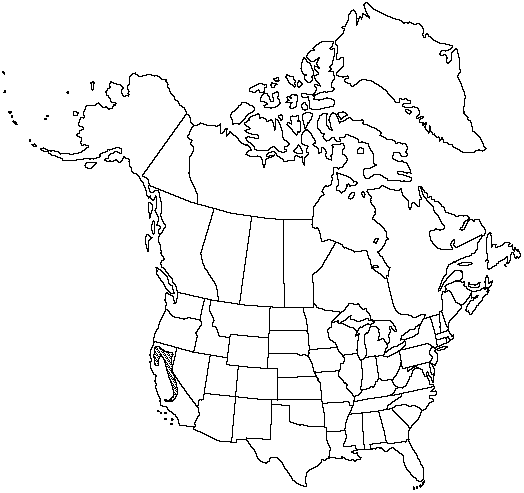Abies lowiana
Proc. Roy. Hort. Soc. London 3: 317. 1863.
Trees to 60m; trunk to 1.9m diam.; crown somewhat spirelike. Bark gray, thin, smooth, with age thickening and breaking into deep longitudinal furrows (corky), which may reveal inner yellow-caramel periderm. Branches diverging from trunk at right angles, or slightly drooping; twigs mostly opposite, yellow-green, pubescent or glabrous. Buds exposed, tan, globose, resinous, moderately large, apex rounded; basal scales short, broad, equilaterally triangular, sparsely pubescent, not resinous, margins entire, apex sharp-pointed. Leaves 2–6cm × 2–3mm, mostly 2-ranked, flexible, proximal portion ± straight; cross-section flat, grooved adaxially; odor pungent, pinelike; abaxial surface glaucous or not, with 5–8 stomatal rows on each side of midrib; adaxial surface light green, not glaucous, with ca. (5–) 7 (–9) stomatal rows at midleaf, these fewer toward leaf apex; apex weakly notched; resin canals small, near margins and abaxial epidermal layer. Seed-cones cylindric, 8–9 × 4–4.5cm, olive-green, turning to yellowish-brown, then darker brown, sessile, apex round; scales ca. 2.5–3 × 2.8–3.8cm, pubescent; bracts included. Seeds 8–12 × 3mm, body dull brown; wing about twice as long as body, brown with rosy tinge; cotyledons 5–9.
Habitat: Mixed coniferous forests
Elevation: 900–2300m
Discussion
Selected References
None.
Lower Taxa
"thickening" is not a number."timesaslongasbody" is not declared as a valid unit of measurement for this property.
